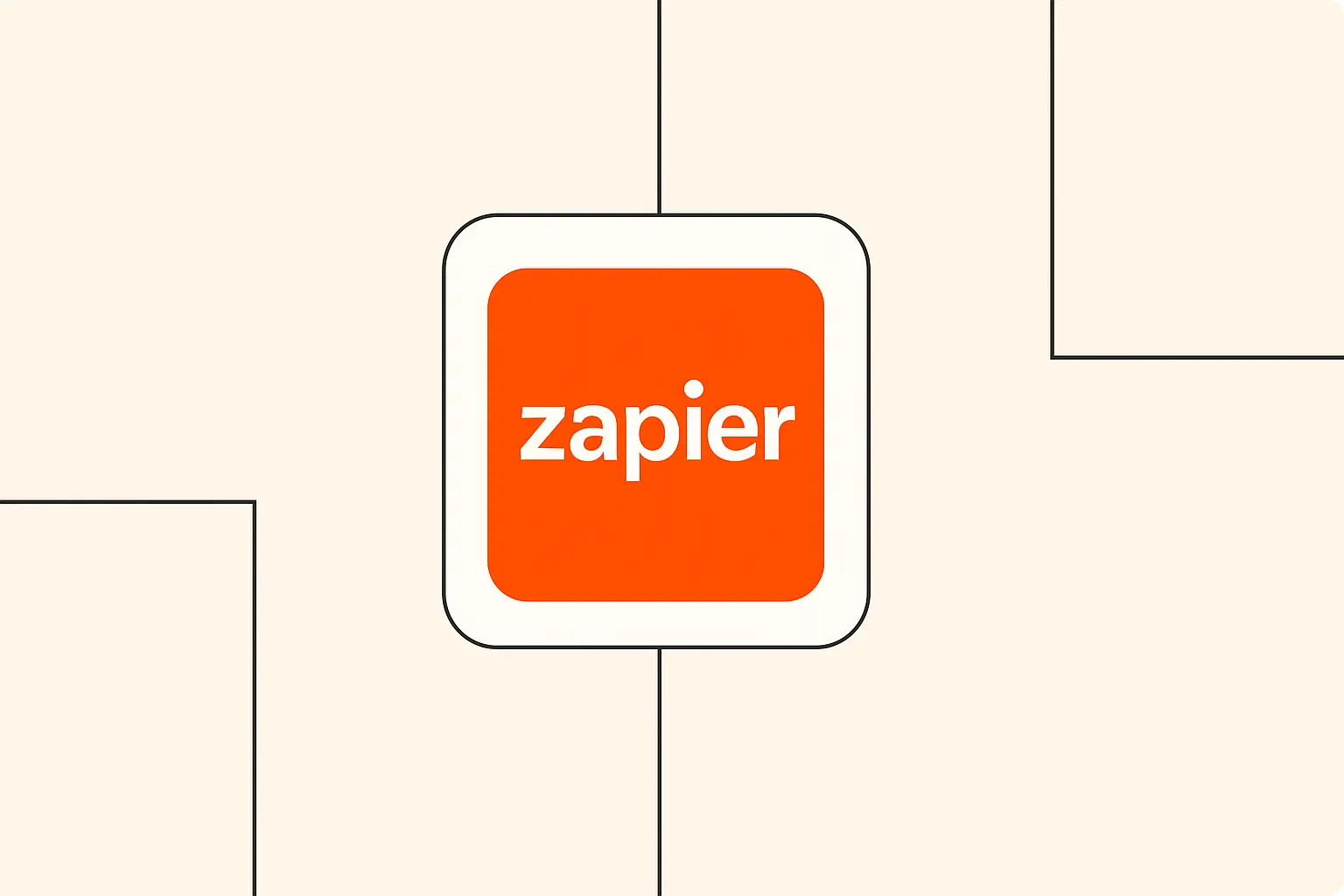
Ever feel like you're drowning in a sea of data? Invoices, emails, reports, customer feedback – it comes pouring in from every direction, often in messy, inconsistent formats. Extracting the valuable nuggets hidden within this digital deluge can feel like panning for gold in a rushing river – tedious, time-consuming, and prone to error. That's where data parsing, especially when supercharged by Artificial Intelligence, becomes your lifeline.
So, what exactly is data parsing? Think of it as translating data from one format into another, more structured and usable format. It’s the process of taking raw, often jumbled data – like the text in an email or a PDF invoice – and systematically extracting specific pieces of information, organizing them neatly so your software and systems can actually understand and use them. Now, imagine automating this entire translation process with the power of AI. Suddenly, that overwhelming flood becomes a manageable, valuable stream of insights. Automating data parsing isn't just a convenience; it's rapidly becoming a necessity for businesses aiming to stay agile and competitive, potentially saving countless hours and reducing costly errors.
In this guide, I want to walk you through the best practices for harnessing AI to automate your data parsing tasks. We'll explore how AI transforms this process, the key technologies involved, essential strategies for success, and how to navigate common challenges. Let's dive in and turn that data chaos into automated clarity!
Understanding AI-Powered Data Parsing
For years, data parsing often relied on rigid, rule-based systems. You'd meticulously define templates, telling the software exactly where to find the invoice number or the customer name based on fixed positions or keywords. This worked okay for highly consistent data, but the moment a format changed slightly – a new field added, a different layout used – the whole system could break, requiring manual intervention and constant updates. It was brittle and frustrating, wasn't it?
Enter AI. AI-based parsing methods are far more flexible and intelligent. Instead of relying solely on predefined rules, they learn to understand the context and structure of the data, much like a human would. This adaptability is a game-changer, especially when dealing with the diverse and often messy data formats common in today's digital world. According to insights from AI parsing specialists like Parseur, AI significantly reduces the need for manual template creation and maintenance for varied document types.
So, what's the magic behind AI parsing? Several key technologies work together. Natural Language Processing (NLP) allows the AI to understand human language, extracting meaning from text found in emails, documents, and reports. Then there's Machine Learning (ML), where algorithms learn from vast amounts of data to identify patterns and make predictions about where specific information is likely located, even in previously unseen formats. Complementing this is pattern recognition, which helps the AI identify recurring structures and layouts within the data. Together, these technologies enable AI tools to parse data with remarkable accuracy and flexibility.
The applications are incredibly broad. Think about automatically extracting key details from supplier invoices to populate your accounting software, pulling customer information from emails to update your CRM, processing resumes to identify qualified candidates, or even analyzing product reviews for sentiment. Any process involving manual data extraction from semi-structured or unstructured sources is a prime candidate for AI-powered parsing automation. This shift not only saves time but also unlocks data that might have previously been too difficult or costly to process manually.
Essential Best Practices for Data Parsing Automation
Before you jump into automating your parsing, laying the right groundwork is crucial. It's like building a house – you need a solid foundation. This starts with thoughtful pre-processing of your data.
Pre-processing Considerations
First, consider data standardization. Ensuring your input data adheres to certain basic standards, even if formats vary, can significantly improve AI performance. This might involve simple steps like converting all text to a specific encoding (like UTF-8) or ensuring date formats are somewhat consistent before feeding them to the AI parser. Think of it as tidying up the raw materials before the main work begins. Concepts outlined in resources like Towards Data Science on pre-processing highlight how crucial cleaning and preparing data is for any data-driven task, including AI parsing.
Next comes input validation. Have mechanisms in place to check if the incoming data is even suitable for parsing. Is the file readable? Is it the expected type (e.g., PDF, email)? Rejecting or flagging clearly corrupted or incorrect files early prevents downstream errors and wasted processing power. Equally important are robust error handling protocols. What happens if the AI can't parse a document confidently? Define clear steps – maybe it flags the document for manual review, sends an alert, or attempts parsing with a fallback method. Don't let errors silently break your workflow.
Choosing the Right AI Tools
With your pre-processing strategy in mind, the next step is selecting the appropriate AI tool. The market is growing, offering everything from general automation platforms with parsing features to highly specialized solutions. Platforms like Zapier offer built-in parsing capabilities often suitable for simpler, template-based extraction within broader automation workflows. Others, like Make.com, provide powerful data transformation tools that can be integral to complex parsing scenarios.
Beyond these, you'll find specialized AI parsing tools often designed for specific document types like invoices or receipts, as highlighted in comparisons like those found on Datamation. When choosing, consider integration capabilities – how easily does the tool connect with your existing software stack (CRM, ERP, databases)? Also, evaluate scalability. Will the tool handle your current volume and grow with your needs? Don't pick a tool that solves today's problem but creates tomorrow's bottleneck.
Setting Up Reliable Workflows
Finally, building a reliable workflow is key. This involves clearly defining your parsing rules or, in the case of AI, guiding the model's learning process. What specific fields do you need to extract? What are the potential variations? Even with AI, providing clear examples or initial guidance helps immensely. If your tool uses templates alongside AI (a common hybrid approach), ensure these templates are consistent and well-maintained.
Crucially, implement quality checks within the workflow. Don't just trust the AI blindly, especially initially. Have steps that validate the extracted data – does the total amount look reasonable? Is the extracted date in a valid format? Perhaps compare extracted data against known databases or apply checksums. Regular quality assurance builds trust and ensures the automation delivers accurate results, preventing the "garbage in, garbage out" problem.
Popular AI Tools for Data Parsing
Navigating the landscape of AI parsing tools can feel overwhelming, but understanding the strengths of different platforms can help you make the right choice. Many businesses already use automation platforms that have built-in parsing features, which can be a great starting point.
For instance, Zapier's Parser is a popular choice for extracting data from emails and text. It often works best when the data has a somewhat consistent structure, allowing you to create templates to guide the extraction. While perhaps less reliant on complex AI than specialized tools, it's incredibly useful for integrating parsed data directly into thousands of other apps within the Zapier ecosystem, making it ideal for straightforward, connected workflows. I've found it particularly handy for pulling lead information from contact form emails.
Similarly, Make.com (formerly Integromat) offers robust tools for data manipulation and transformation, which are often essential components of a parsing workflow. While not solely a parsing tool, its ability to handle complex data structures, transform formats, and integrate with various services makes it a powerful ally when you need more control over how data is processed after initial extraction, or when combining data from multiple sources. Its visual workflow builder allows for intricate logic that can support sophisticated parsing needs.
Beyond these general automation platforms, there's a growing category of specialized AI parsing tools, often highlighted in industry reviews like those on Datamation. Tools like Parseur, Nanonets, or Rossum AI are specifically designed for high-accuracy document parsing (invoices, receipts, contracts, etc.) using advanced AI models. These tools often require less manual template setup, can handle greater variability in document layouts (a major advantage noted by sources like Parseur's blog), and provide higher confidence scores for extracted data. The best choice depends on your specific needs: the complexity and variability of your documents, required accuracy, budget, and integration requirements. Simple email parsing might be fine with Zapier, while high-volume, varied invoice processing likely benefits from a specialized tool.
Common Challenges and Solutions
Automating data parsing with AI is powerful, but it's not without its hurdles. Let's be honest, real-world data is messy! One of the biggest challenges I see clients face is handling unstructured data. Think free-form text in emails, social media comments, or scanned documents with no consistent layout. Traditional methods crumble here, but AI, particularly NLP, offers a path forward. The solution often involves training AI models on diverse examples to recognize entities and context, but it requires careful setup and validation. Resources like TechRepublic offer insights into strategies for tackling this pervasive issue.
Another common headache is dealing with format variations. Even within supposedly "structured" documents like invoices, suppliers use different templates, fields might be labeled differently, or layouts can change unexpectedly. AI is inherently better at handling this than rigid templates, as discussed by platforms like Parseur. The solution lies in choosing AI tools trained on large, diverse datasets that can generalize well, and implementing continuous learning loops where the AI improves as it encounters new formats (often involving human-in-the-loop validation initially).
Managing large datasets also presents challenges, both in terms of processing speed and infrastructure costs. Parsing thousands or millions of documents requires efficient algorithms and scalable cloud infrastructure. Solutions involve optimizing the parsing models, using batch processing techniques, and choosing cloud-native tools designed for large volumes. Ensuring accuracy and reliability remains paramount. No AI is perfect, so implementing validation rules, cross-referencing extracted data with other sources, and setting confidence thresholds below which manual review is triggered are crucial steps to maintain data integrity.
Building Robust Parsing Workflows
Okay, we've talked theory, tools, and challenges. Now, let's get practical. How do you actually build a robust AI parsing workflow that delivers reliable results day in and day out? It starts with thoughtful design.
First, map out the entire process step-by-step. Where does the data originate (email inbox, SFTP server, API)? What pre-processing is needed? Which tool will perform the parsing? What validation checks are required? Where does the structured data need to go (database, CRM, ERP)? Visualizing this flow helps identify potential bottlenecks or missing pieces before you start building.
Next comes rigorous testing and validation. Don't just test with a few "perfect" examples. Use a diverse set of real-world documents, including edge cases and examples with known variations or potential errors. Compare the AI's output against manually extracted data to calculate accuracy rates. Refine your rules, templates, or AI model training based on these results. This iterative testing phase is absolutely critical for building confidence in the automation.
Once deployed, the work isn't over. Continuous monitoring and maintenance are essential. Set up alerts for parsing failures or low-confidence results. Periodically review the performance metrics. As input data formats evolve or your business needs change, you'll need to update the workflow, retrain models, or adjust configurations. Treat your automation like a living system, not a one-time setup. Finally, document everything! Clear documentation on the workflow logic, tool configurations, error handling procedures, and points of contact makes troubleshooting and future updates infinitely easier.
Advanced Tips and Techniques
Ready to take your AI parsing game to the next level? Once you've mastered the basics and built a solid workflow, there are advanced techniques you can employ for even better performance and resilience.
Optimizing parsing speed can be critical for high-volume operations. This might involve fine-tuning the AI model parameters (if your tool allows), using more powerful computing resources, or implementing parallel processing where multiple documents are parsed simultaneously. Sometimes, simpler rule-based checks can quickly pre-filter documents or extract easy fields before handing off the more complex parts to the AI, saving computational effort.
Handling complex data structures, like nested tables within documents or data that spans multiple pages, often requires more sophisticated tools or custom logic. Look for AI parsers specifically designed for table extraction or consider chaining multiple parsing steps together. For instance, one step might identify a table region, and a subsequent step extracts data row by row within that region. Implementing fallback mechanisms adds robustness. If the primary AI parser fails or returns a low confidence score, can the workflow automatically try a secondary method (perhaps a simpler template-based approach) or immediately route the document for manual review? Having a Plan B prevents failures from halting your entire process.
Finally, think about scaling your parsing operations effectively. As volume grows, ensure your architecture can handle the load. This might involve load balancing, using message queues to manage incoming documents, and leveraging cloud auto-scaling features. Regularly review your tool's pricing tiers and capabilities to ensure they still align with your growing needs. Proactive planning for scale prevents performance degradation as your reliance on automated parsing increases.
Integration Strategies
An AI parsing tool rarely exists in a vacuum. Its true value is unlocked when it seamlessly integrates with the rest of your business systems. Effective integration is key to realizing the full benefits of automation.
Connecting your parsing tool with other automation platforms like Zapier or Make.com is often the first step. These platforms act as central hubs, allowing you to trigger workflows based on new emails or files, send data to the parser, receive the structured output, and then route it to countless other applications – CRMs, ERPs, spreadsheets, databases, communication tools, and more. This creates end-to-end automation far beyond simple data extraction.
API considerations are crucial when choosing and implementing a parsing tool, especially specialized ones (Datamation often covers API availability in reviews). Does the tool offer a well-documented REST API? What are the rate limits? How does authentication work? A robust API allows for tighter, more customized integrations directly within your own applications or complex workflows.
Think carefully about data storage and management. Where will the original documents be stored? Where will the extracted, structured data reside? Ensure you have a clear strategy, whether it's cloud storage, a dedicated database, or direct updates to your business systems. Implement data retention policies and ensure compliance with regulations like GDPR or CCPA. Speaking of compliance, security best practices are non-negotiable. Use secure authentication methods (like API keys or OAuth), encrypt data in transit and at rest, manage access controls carefully, and ensure your chosen tools meet relevant security standards, potentially referencing guidelines from bodies like NIST for data management principles.
Measuring Success and ROI
Implementing AI data parsing automation is an investment, and like any investment, you need to measure its return. How do you know if your efforts are truly paying off? By tracking the right metrics.
Start by defining clear Key Performance Indicators (KPIs). These will vary depending on your goals but often include metrics like processing time per document, percentage of documents processed automatically (straight-through processing rate), and reduction in manual data entry hours. Tracking accuracy rates is paramount. What percentage of fields are extracted correctly? How often does the system require manual correction? Monitor this closely, especially when dealing with new document types or after making changes to the workflow. Accuracy is the bedrock of trust in automation.
Monitoring efficiency gains provides tangible evidence of ROI. Calculate the time saved by automating tasks previously done manually. Factor in the reduction in errors and the associated costs (e.g., correcting misrouted payments due to incorrect invoice data). This often reveals significant operational improvements. A comprehensive cost-benefit analysis should compare the costs of the AI tool (subscriptions, implementation, maintenance) against the savings generated through increased efficiency, reduced errors, and potentially faster business processes (like quicker invoice payments or faster lead follow-up). This analysis justifies the investment and helps secure ongoing support for automation initiatives.
Conclusion: Embrace the Future of Data Handling
We've journeyed through the world of AI-powered data parsing, from understanding the core concepts to implementing robust workflows and measuring success. The key takeaway? Automating data parsing with AI isn't just about saving time; it's about transforming raw, messy data into a structured, actionable asset with unprecedented efficiency and accuracy. Remember the best practices: start with solid pre-processing, choose the right tools like those offered by Zapier or Make.com or specialized solutions, build reliable workflows with quality checks, and never stop monitoring and refining.
The future of data parsing is undoubtedly intertwined with advancements in AI. We can expect even more sophisticated models capable of understanding increasingly complex documents with less training data, tighter integrations across platforms, and more intuitive user interfaces. Technologies like NLP and ML will continue to evolve, making automated parsing accessible to even more businesses and use cases. Handling unstructured data will become increasingly streamlined.
Ready to stop drowning in data and start leveraging its power? The time to explore AI data parsing automation is now. Identify a repetitive, manual data extraction task in your workflow – processing invoices, extracting lead data, analyzing feedback – and start experimenting. The tools are more accessible than ever, and the potential benefits are enormous.
Ready to automate your data parsing? Explore the tools and strategies we've discussed. For more expert tips, tutorials, and guides on AI and automation, sign up for The AI Automation Guide newsletter!











